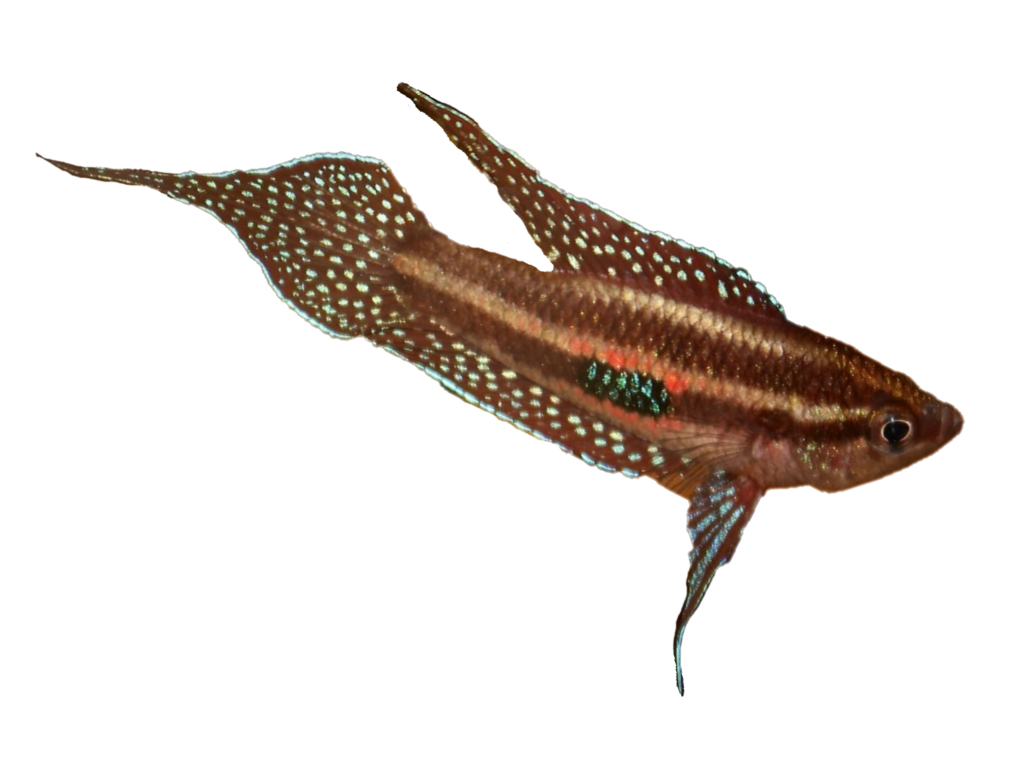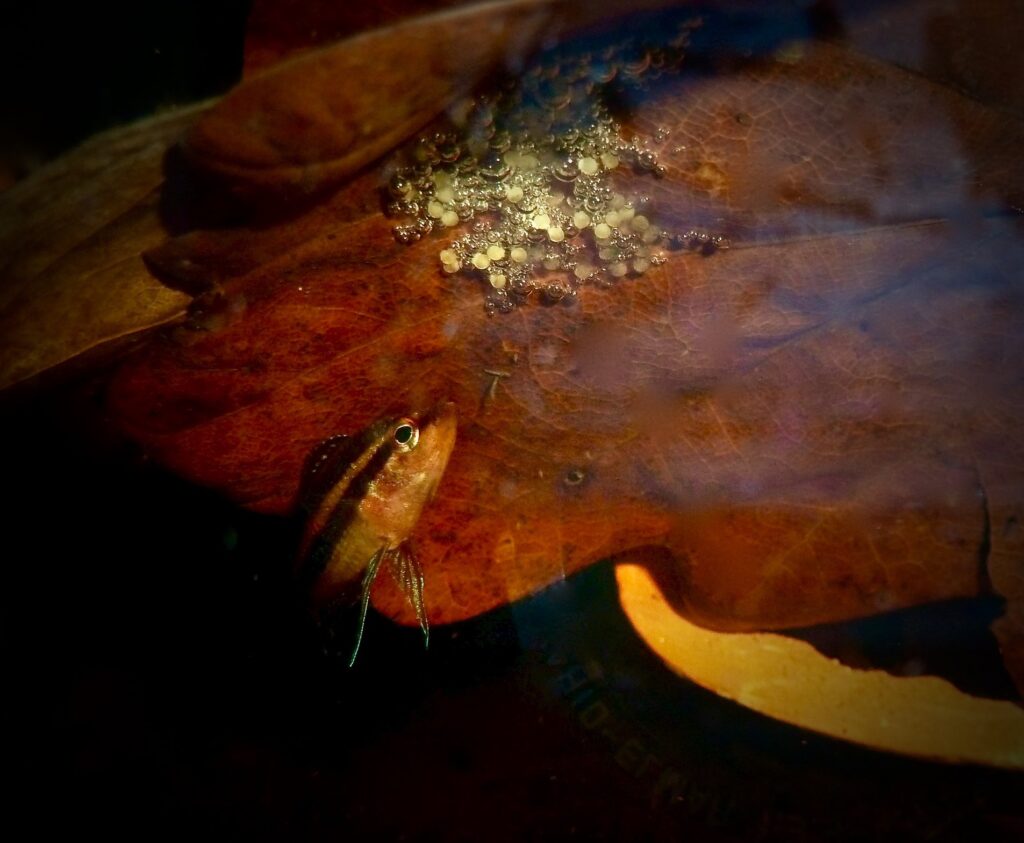Liquorice gourami
Parosphromenus linkei

Small fish in dark, acidic waters
Liquorice gouramis are a group of fish that live in Malaysia and Indonesia. There, an environment called tropical peat swamps creates a unique habitat for the liquorice gourami. The water is dark and acidic, due to the substances that leach into the water from the soil. In some places, the water can be as acidic as vinegar. The fish can be found in running streams as well as more stagnant pools where the water can be as shallow as 10–20 centimetres. But the underlying water-filled layer of soil, called peat, can be 20 metres deep.
This is an example of what the liquorice gourami's habitat can look like.
Photo: Rafael Eggli
A couple of Parosphromenus linkei.
Photo: Helene Schoubye
A beautiful male of P. linkei.
Photo: Rafael Eggli
Two liquorice gouramis of the P. alfredi species.
Photo: Helene Schoubye
A male of the P. deissneri species.
Photo: Wentian Shi
Another example of how the habitat of the liquorice gourami can look like.
Photo: S.J.D. Parosphromenus project
A male of the species P. phoenicurus showing a typical courtship behaviour, with its beautiful fins.
Photo: Martin-Fischer-CC-BY-SA
Highly endangered group in conservation project
Science has so far identified 23 different species of liquorice gourami, but there may be many more. The species here at Akvariet is called Parosphromenus linkei, and lives in the southern part of Borneo. All species of liquorice gourami are highly endangered, and no one knows how many species have already gone extinct, or will go extinct before they are discovered.
The threat is caused by humans destroying the habitat of the fish, by digging up and burning the peatlands that the fish depend on, to make way for palm oil plantations. Many of the species have such small distribution areas that a single scoop with an excavator may be enough to wipe out a population, or in worst case an entire species. To save the group of licorice gourami, a project called ”The Parosphromenus Project” has been initiated. As part of this project, the Malmö Museum Aquarium cares for the P. linkei and P. deissneri species of liquorice gouramis.
A destroyed peatland in Borneo, in the middle of the liquorice gourami's habitat.
Photo: S.J.D, Parosphromenus project.
Ditches drain the water out of the highly sensitive peatlands.
Photo: S.J.D, Parosphromenus project.
The P. linkei species in an aquarium.
Photo: Rafael Eggli
Builds nests of bubbles
What all liquorice gouramis have in common is that the males have truly spectacular colours and fins. They shine in red, blue, green or violet, and the sheen is probably there to make the males visible in the dark and murky water. His colours become particularly bright at mating time. Females, on the other hand, are pale and duller, and no one yet knows how males actually distinguish between females of different species. Liquorice gouramis use caves as nests. The caves may consist of abandoned shells, a small pile of leaves or other plant material. In the roof of the cave, the male sometimes builds a small nest of bubbles, where the female lays her eggs.

Photo: Rafael Eggli
Distribution worldwide.
The southern part of Borneo.

Threat based on the Red List

Trade regulations
CITES: Not listed.